Two New TV Breakthroughs That Will Blow Your Mind (Op-Ed)

|
| Credit: Shutterstock |
David Pedigo is the senior director of learning & emerging trends at CEDIA. Pedigo oversees CEDIA's training and certification department as well as the Technology Council, whose mission is to inform members and industry partners on emerging trends, threats and opportunities within the custom electronics sector. Pedigo contributed this article to Live Science's Expert Voices: Op-Ed & Insights.
I often get the question "Should I buy a new TV?" My answer is typically more complicated than people would like, but that's because we are on the verge — perhaps 6 to 12 months away — from seeing significant changes in television.
Thus my answer is typically, if you can wait just a bit, then no, hold off. And here's why.
For many, while the hype of 4K TV has been great, the value proposition hasn't been there. While there was a significant difference between analog TV and HDTV, unless you are sitting very close to an Ultra HD/4K TV, the differences are more subtle when compared with HDTV, except in cases of very large screens.
A closer relationship with your TV
TV, for the most part, has gone through an evolutionary process of increasing display pixel density, and now the TV in the living room or home theater is complete (though there are major caveats, but beyond the scope of this article).
To understand why, think about how humans see images. In 1886, impressionist painters Georges Seurat and Paul Signat developed a new way of painting images, called pointillism. Pointillism is a technique where a painter uses thousands of little dots which, when viewed from a distance, form an image. This process is similar to how television images are created today.
In the analog days, TV broadcasts consisted of vertical and horizontal lines, and where they intersected a dot was formed, called a pixel — short for picture element. In a standard definition 480i image, there is a potential 307,200 pixels on the screen (potential because of interlaced vs. progressive scanning). When analog TVs were in their heyday, the image transmitted using interlacing (hence the "i" in 480i). In interlacing, half of the scan lines would be displayed at one time, alternating between odd and even scan lines. This was an efficient way to transmit an image, as it happened so quickly, typically at 29.97 times (frames) per second. However, interlacing — particularly in analog — degraded image quality. As televisions moved towards digital, the transmissions more often arrived in progressive scan, which is sequential scan lines, not alternating.
While 300,000 pixels sounds like a lot, once manufacturers started making televisions bigger, the picture quality suffered. Thus, just like a pointillism painting, the bigger the picture, the further away you needed to sit. This is because the increasing screen size, or painting size, proportionately increases the size of the dots.
In the 1980s, large screen TVs became a fad. For those of us old enough to remember them, the thought of moving one was dreadful, as they were just as heavy as they were big. The problem was that the recommended seating distance for optimal viewing was, at minimum, six times the screen size. Thus, if you bought a primo 50-inch big screen TV, you needed to sit 300 inches away (25 feet).
When HDTV came out, manufacturers were able to add enough pixels (between 1 million and 2 million) to be able to bring the seating distance down to three times the screen height. While the shape of the screen widened, with the same size TV, based on screen height, you only needed to sit 12 feet away to not sacrifice image quality.
However, in the last few years the term Ultra HD/4K has hit the market. Ultra HD comes in at a whopping 8.3 million pixels, and the seating distance for that same 50 inch TV drops down to 6 feet.
Now, we have reached the threshold of human vision regarding image resolution.
With pixel resolution mostly solved, the industry has moved onto the next problem: how to make better pixels. Over the last few years, manufacturers, content creators and standards bodies have been working on improving the other two main parts of an image: contrast ratio (dynamic range) and color space (gamut). Combined, these two innovations allow for a significantly greater picture, one that is significantly noticeable by viewers.
The resulting two technologies that manufacturers will promote during the next few years are high dynamic range (HDR) and wide color gamut (WCG).
HDR: Killer contrast
Dynamic range, in this context, is what most refer to as contrast ratio. Contrast ratio, in layman's terms, is the ratio between the brightest whites and the darkest blacks a display can reproduce. Despite marketing hype, a 100:1 contrast ratio, particularly on a projection system, is a very, very good image in today's video world.
However, humans can see far beyond a 10,000:1 contrast ratio, and HDR will get many displays much closer to that level. This is a very promising development because the human eye is very sensitive to changes in contrast due to the anatomical structure of the eye.
The biggest driving force behind HDR is the increasing light output of displays. The average TV of the 2000s and before had a maximum white level of 100 Nits (100 cd/m2). (A Nit is unit of measurement for light output.) The amount of Nits is the maximum light output a display produces. Taking the average black levels and 100 nits, the dynamic range of most televisions equated to roughly 7 f-stops on a camera — humans can see between 14 and 24 f-stops of contrast depending on the condition.
HDR displays, once they truly hit the market, will have the ability to hit 1,600 nits (or greater) for brief scenes, such as the sun reflecting off a metal surface or an explosion. This equates to 5 f-stop increases in brightness. At the same time, manufacturers are able to reduce black levels 400 percent, which equals an additional 2 f-stops in black levels. What this ultimately means is that high dynamic range will equate to a significantly greater image from a contrast ratio perspective, allowing us to get much closer to the desired, true, 10,000:1 contrast ratio.
Wide Color Gamut: 50 percent more hues
High dynamic range alone is enough to be extremely bullish about the new wave of displays hitting the market. However, it's only half of the equation. The other half of the equation is in the color that a display can reproduce. Most displays today use an ITU (International Telecommunications Union) standard called rec.709, which standardizes the maximum values of the primary colors: red, blue and green and any colors in between . (This gets a little complicated, but there are specific x and y coordinates for each primary color, with a related chart called the CIE 1931 color chart.)
Rec. 709 allows for a television to reproduce approximately 16 million colors. This is due to using an 8-bit scheme for each of the primary colors. Color TV uses a bit value (either 0 or 1) to represent varying shades of each primary color. In 8-bit, there are 256 variations of each primary color (red, blue and green). What this means, in 8-bit, is that there are 2 values (either 0 or 1) to the 8th power (2^8 = 256). Since each pixel has 256 shades of red, blue and green, there are roughly 16 million colors that a display can reproduce. While this may sound like a lot, it really is nowhere near the colors the human eye can see.
The new color space is called ITU BT.2020 and will offer 50 percent more colors than current televisions. Utilizing 10 bits for each primary color giving 1024 variations, BT.2020 allows for much deeper reds and more vibrant yellows and has 1024 variations allowing for much smoother gradients.
So what does this mean?
Thus, the combination of all these enhancements, HDR which enables a 7-fold (6,400 percent) increase in contrast ratio, Wide Color Gamut, which allows 1024 shades of each primary color through 10-bit color, and also increased pixel resolution, we are in for an amazing increase in home video experience.
Follow all of the Expert Voices issues and debates — and become part of the discussion — on Facebook, Twitter and Google+. The views expressed are those of the author and do not necessarily reflect the views of the publisher. This version of the article was originally published on Live Science.
متن فارسی و انگلیسی پیام مهم رهبر معظم انقلاب به جوانان اروپا و آمریکای شمالی

متن پیام مقام معظم رهبری خطاب به جوانان اروپا و آمریکا به این شرح است:
به عموم جوانان در اروپا و امریکای شمالی
حوادث اخیر در فرانسه و وقایع مشابه در برخی دیگر از کشورهای غربی مرا
متقاعد کرد که دربارهی آنها مستقیماً با شما سخن بگویم. من شما جوانان را
مخاطب خود قرار میدهم؛ نه به این علّت که پدران و مادران شما را ندیده
میانگارم، بلکه به این سبب که آیندهی ملّت و سرزمینتان را در دستان شما
میبینم و نیز حسّ حقیقتجویی را در قلبهای شما زندهتر و هوشیارتر مییابم.
همچنین در این نوشته به سیاستمداران و دولتمردان شما خطاب نمیکنم، چون معتقدم که آنان آگاهانه راه سیاست را از مسیر صداقت و درستی جدا کردهاند.
سخن من با شما دربارهی اسلام است و بهطور خاص، دربارهی تصویر و چهرهای
که از اسلام به شما ارائه میگردد. از دو دهه پیش به این سو ــ یعنی تقریباً
پس از فروپاشی اتّحاد جماهیر شوروی ــ تلاشهای زیادی صورت گرفته است تا
این دین بزرگ، در جایگاه دشمنی ترسناک نشانده شود. تحریک احساس رعب و نفرت و
بهرهگیری از آن، متأسّفانه سابقهای طولانی در تاریخ سیاسی غرب دارد. من
در اینجا نمیخواهم به «هراسهای»
گوناگونی که تاکنون به ملّتهای غربی القاء شده است، بپردازم. شما خود با
مروری کوتاه بر مطالعات انتقادی اخیر پیرامون تاریخ، میبینید که در
تاریخنگاریهای جدید، رفتارهای غیر صادقانه و مزوّرانهی دولتهای غربی با
دیگر ملّتها و فرهنگهای جهان نکوهش شده است. تاریخ اروپا و امریکا از
بردهداری شرمسار است، از دورهی استعمار سرافکنده
است، از ستم بر رنگینپوستان و غیر مسیحیان خجل است؛ محقّقین و مورّخین
شما از خونریزیهایی که به نام مذهب بین کاتولیک و پروتستان و یا به اسم
ملیّت و قومیّت در جنگهای اوّل و دوّم جهانی صورت گرفته، عمیقاً ابراز
سرافکندگی میکنند.
این بهخودیخود جای تحسین دارد و هدف من نیز از بازگوکردن بخشی از این
فهرست بلند، سرزنش تاریخ نیست، بلکه از شما میخواهم از روشنفکران خود
بپرسید چرا وجدان عمومی در غرب باید همیشه با تأخیری چند ده ساله و گاهی
چند صد ساله بیدار و آگاه شود؟ چرا بازنگری در وجدان جمعی، باید معطوف به
گذشتههای دور باشد نه مسائل روز؟ چرا در موضوع مهمّی همچون شیوهی برخورد
با فرهنگ و اندیشهی اسلامی، از شکلگیری آگاهی عمومی جلوگیری میشود؟
شما بخوبی میدانید که تحقیر و ایجاد نفرت و ترس موهوم از «دیگری»، زمینهی
مشترک تمام آن سودجوییهای ستمگرانه بوده است. اکنون من میخواهم از خود
بپرسید که چرا سیاست قدیمی هراسافکنی
و نفرتپراکنی، اینبار با شدّتی بیسابقه، اسلام و مسلمانان را هدف گرفته
است؟ چرا ساختار قدرت در جهان امروز مایل است تفکر اسلامی در حاشیه و
انفعال قرار گیرد؟ مگر چه معانی و ارزشهایی در اسلام، مزاحم برنامهی قدرتهای بزرگ
است و چه منافعی در سایهی تصویرسازی غلط از اسلام، تأمین میگردد؟ پس
خواستهی اوّل من این است که دربارهی انگیزههای این سیاهنمایی گسترده
علیه اسلام پرسش و کاوش کنید.
خواستهی دوم من این است که در واکنش به سیل پیشداوریها و تبلیغات منفی،
سعی کنید شناختی مستقیم و بیواسطه از این دین به دست آورید. منطق سلیم
اقتضاء میکند که لااقل بدانید آنچه شما را از آن میگریزانند و میترسانند،
چیست و چه ماهیّتی دارد. من اصرار نمیکنم که برداشت من یا هر تلقّی دیگری
از اسلام را بپذیرید بلکه میگویم اجازه ندهید این واقعیّت پویا و اثرگذار
در دنیای امروز، با اغراض و اهداف آلوده به شما شناسانده شود. اجازه ندهید
ریاکارانه، تروریستهای تحت استخدام خود را به عنوان نمایندگان اسلام به شما معرفی کنند. اسلام را از طریق منابع اصیل و مآخذ دست اوّل آن بشناسید. با اسلام از طریق قرآن و زندگی پیامبر
بزرگ آن (صلّیاللهعلیهوآلهوسلّم) آشنا شوید. من در اینجا مایلم بپرسم
آیا تاکنون خود مستقیماً به قرآن مسلمانان مراجعه کردهاید؟ آیا تعالیم
پیامبر اسلام (صلّیاللهعلیهوآلهوسلّم) و آموزههای انسانی و اخلاقی او
را مطالعه کردهاید؟ آیا تاکنون به جز رسانهها، پیام اسلام را از منبع
دیگری دریافت کردهاید؟ آیا هرگز از خود پرسیدهاید که همین اسلام، چگونه و
بر مبنای چه ارزشهایی طیّ قرون متمادی، بزرگترین تمدّن علمی و فکری جهان را پرورش داد و برترین دانشمندان و متفکّران را تربیت کرد؟
من از شما میخواهم اجازه ندهید با چهرهپردازیهای موهن و سخیف، بین شما و
واقعیّت، سدّ عاطفی و احساسی ایجاد کنند و امکان داوری بیطرفانه را از شما
سلب کنند. امروز که ابزارهای ارتباطاتی، مرزهای جغرافیایی را شکسته است،
اجازه ندهید شما را در مرزهای ساختگی و ذهنی محصور کنند. اگر چه هیچکس
بهصورت فردی نمیتواند شکافهای ایجاد شده را پر کند، امّا هر یک از شما
میتواند به قصد روشنگریِ خود و محیط پیرامونش، پلی از اندیشه و انصاف بر
روی آن شکافها بسازد. این چالش از پیش طراحی شده بین اسلام و شما جوانان،
اگر چه ناگوار است امّا میتواند پرسشهای جدیدی را در ذهن کنجکاو و جستجوگر
شما ایجاد کند. تلاش در جهت یافتن پاسخ این پرسشها، فرصت مغتنمی را برای
کشف حقیقتهای نو پیش روی شما قرار میدهد. بنابراین، این فرصت را برای فهم
صحیح و درک بدون پیشداوری از اسلام از دست ندهید تا شاید به یمن
مسئولیّتپذیری شما در قبال حقیقت، آیندگان این برهه از تاریخ تعامل غرب با
اسلام را با آزردگی کمتر و وجدانی آسودهتر به نگارش درآورند.
سیّدعلی خامنهای
۱۳۹۳/۱۱/۱
***
متن انگلیسی(Message of ayatollah Seyyed Ali Khamenei, Leader of The Islamic Republic of Iran)
***
In the name of God, the Beneficent the Merciful
To the Youth in Europe and North America,
The recent events in France and similar ones in some other Western countries have convinced me to directly talk to you about them. I am addressing you, [the youth], not because I overlook your parents, rather it is because the future of your nations and countries will be in your hands; and also I find that the sense of quest for truth is more vigorous and attentive in your hearts.
I don’t address your politicians and statesmen either in this writing because I believe that they have consciously separated the route of politics from the path of righteousness and truth.
I would like to talk to you about Islam, particularly the image that is presented to you as Islam. Many attempts have been made over the past two decades, almost since the disintegration of the Soviet Union, to place this great religion in the seat of a horrifying enemy. The provocation of a feeling of horror and hatred and its utilization has unfortunately a long record in the political history of the West.
Here, I don’t want to deal with the different phobias with which the Western nations have thus far been indoctrinated. A cursory review of recent critical studies of history would bring home to you the fact that the Western governments’ insincere and hypocritical treatment of other nations and cultures has been censured in new historiographies.
The histories of the United States and Europe are ashamed of slavery, embarrassed by the colonial period and chagrined at the oppression of people of color and non-Christians. Your researchers and historians are deeply ashamed of the bloodsheds wrought in the name of religion between the Catholics and Protestants or in the name of nationality and ethnicity during the First and Second World Wars. This approach is admirable.
By mentioning a fraction of this long list, I don’t want to reproach history; rather I would like you to ask your intellectuals as to why the public conscience in the West awakens and comes to its senses after a delay of several decades or centuries. Why should the revision of collective conscience apply to the distant past and not to the current problems? Why is it that attempts are made to prevent public awareness regarding an important issue such as the treatment of Islamic culture and thought?
You know well that humiliation and spreading hatred and illusionary fear of the “other” have been the common base of all those oppressive profiteers. Now, I would like you to ask yourself why the old policy of spreading “phobia” and hatred has targeted Islam and Muslims with an unprecedented intensity. Why does the power structure in the world want Islamic thought to be marginalized and remain latent? What concepts and values in Islam disturb the programs of the super powers and what interests are safeguarded in the shadow of distorting the image of Islam? Hence, my first request is: Study and research the incentives behind this widespread tarnishing of the image of Islam.
My second request is that in reaction to the flood of prejudgments and disinformation campaigns, try to gain a direct and firsthand knowledge of this religion. The right logic requires that you understand the nature and essence of what they are frightening you about and want you to keep away from.
I don’t insist that you accept my reading or any other reading of Islam. What I want to say is: Don’t allow this dynamic and effective reality in today’s world to be introduced to you through resentments and prejudices. Don’t allow them to hypocritically introduce their own recruited terrorists as representatives of Islam.
Receive knowledge of Islam from its primary and original sources. Gain information about Islam through the Qur’an and the life of its great Prophet. I would like to ask you whether you have directly read the Qur’an of the Muslims. Have you studied the teachings of the Prophet of Islam and his humane, ethical doctrines? Have you ever received the message of Islam from any sources other than the media?
Have you ever asked yourself how and on the basis of which values has Islam established the greatest scientific and intellectual civilization of the world and raised the most distinguished scientists and intellectuals throughout several centuries?
I would like you not to allow the derogatory and offensive image-buildings to create an emotional gulf between you and the reality, taking away the possibility of an impartial judgment from you. Today, the communication media have removed the geographical borders. Hence, don’t allow them to besiege you within fabricated and mental borders.
Although no one can individually fill the created gaps, each one of you can construct a bridge of thought and fairness over the gaps to illuminate yourself and your surrounding environment. While this preplanned challenge between Islam and you, the youth, is undesirable, it can raise new questions in your curious and inquiring minds. Attempts to find answers to these questions will provide you with an appropriate opportunity to discover new truths.
Therefore, don’t miss the opportunity to gain proper, correct and unbiased understanding of Islam so that hopefully, due to your sense of responsibility toward the truth, future generations would write the history of this current interaction between Islam and the West with a clearer conscience and lesser resentment.
Seyyed Ali Khamenei
21st Jan. 2015
انگیزترین عکسهای کهکشانی؛ از سحابی خرچنگ تا چشم گربهای
اما امروزه این مشکل دانشمندان با کمک تلسکوپی که به خارج از جو فرستاده شد مرتفع گشت و این محدودیت ها تا حد زیادی برطرف شد. هابل اولین تلسکوپ عظیم تحقیقاتی بود که دانشمندان به فضا فرستادند. با توجه با دریافت سریعتر تصاویر توسط تلسکوپ هابل، به نوعی آنرا گامی برای حرکت در زمان می دانند.
شما را به تماشای ۲۰ تصویر فوق العاده زیبا که توسط تلسکوپ هابل ارسال شده است دعوت می کنیم.
۱- سحابی خرچنگ
یک ابراختر باقیمانده از یک انفجار ستاره ای بزرگ.

۲- کهکشانهای Antennae
دو کهکشان مارپیچی که توسط گرانش به هم کشیده می شوند.
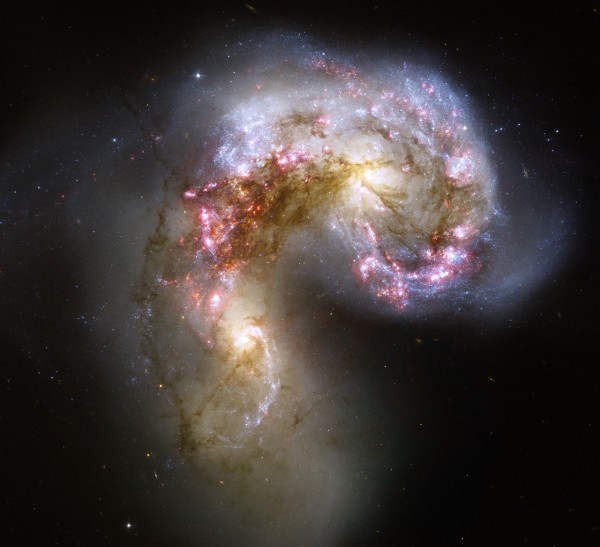
۳- ابر ستاره V838
یک ستاره در کهکشان راه شیری است که بواسطه بزرگی اش، به عنوان یک ستاره پر نور در شب دیده می شود.
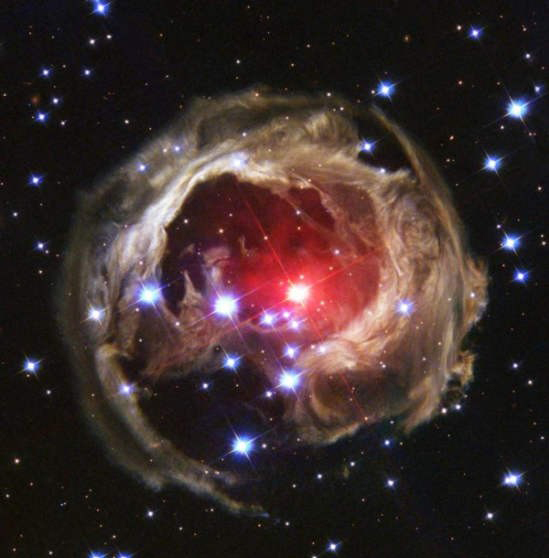
۴- سحابی Bug
گاز منشتر شده با سرعت ۶۰۰۰۰۰ مایل بر ساعت (حدود یک میلیون کیلومتر بر ساعت) باعث تشکیل این شکل پروانه آسمانی می شود.

سحابی bug
۵- Mystic Moutain
کوهی از گرد و غبار و گاز

۶- کهکشان سیگار
کهکشان سیگار یا Messier 82 که ۱۲ میلیون سال نوری با ما فاصله دارد.

۷- سحابی مورچه
Mz 3 نام فنی این سحابی است. سحابی دو قطبی ساخته شده از ابرهای گازی و گرد و خاک و یک هسته درخشان.

۸- سحابی کارینا
این تصویر منطقه ای از تولد و مرگ ستاره ها را در سحابی Carina نشان می دهد. این سحابی شامل دوجین ستاره درخشان که جرمی ۵۰ تا ۱۰۰ برابر خورشید ما دارند می باشد.
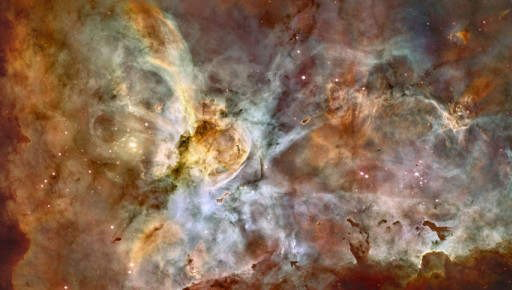
۹- انفجار و آتش ناشی از تولد ستاره ای در کهکشان

۱۰- سحابی مارپیچ
این سحابی در سال ۱۸۲۴ توسط کارل لودویک هاردینگ کشف شد و یکی از نزدیکترین سیاره های نزدیک به زمین است (حدود ۷۰۰ سال نوری). آنرا به "چشم سائرون در ارباب حلقه ها” بسیار شبیه دانسته اند
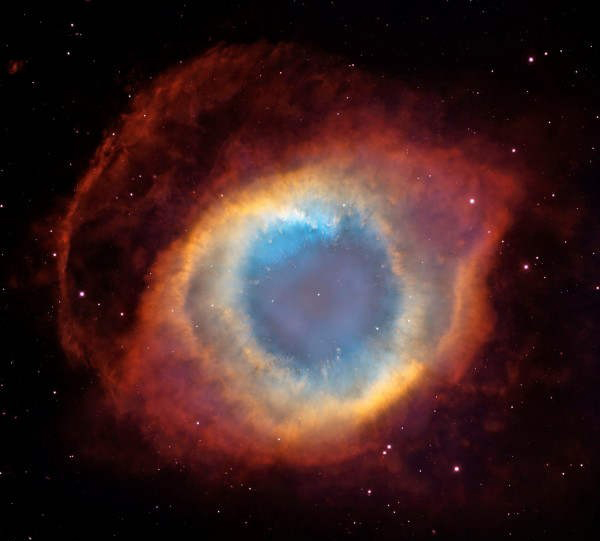
۱۱- فرفره جنوبی!
Messier 83 بعنوان فرفره جنوبی نیز شناخته می شود. یک کهکشان مارپیچی با فاصله ۱۵ میلیون سال نوری از زمین. این کهکشان با دوربین دوچشمی قابل مشاهده است.
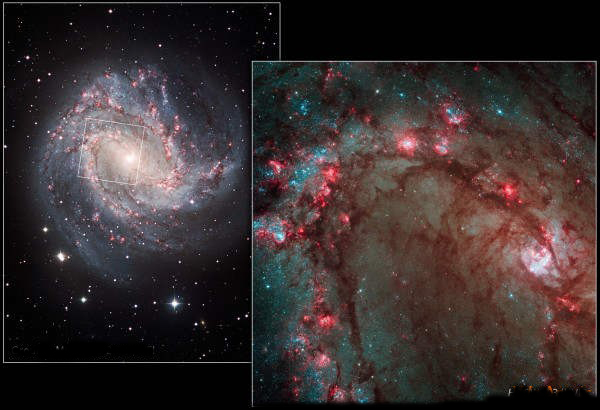
۱۲- شفق قطبی زحل
در سال ۱۹۷۹ توسط سفینه پایونیر ۱۱ کشف شد.

۱۳- سحابی مخروطی
سحابی واقع شده در فاصله ۲۶۰۰ سال نوری از زمین.
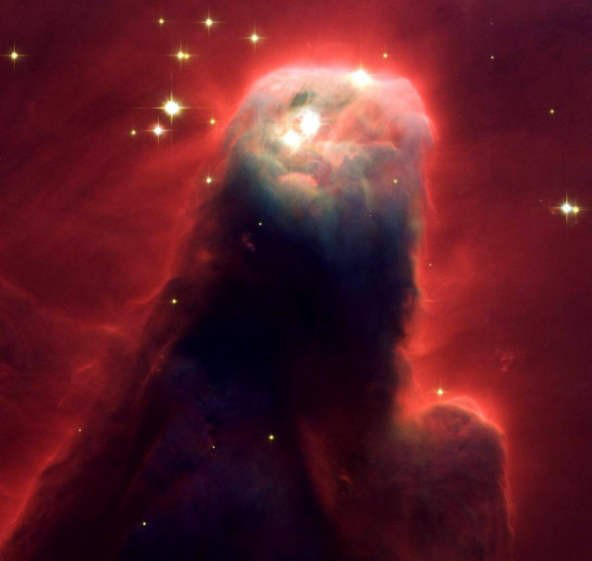
۱۴- سحابی سر اسب
نام دیگر آن Barnard 33 است. این سحابی تاریک در صورت فلکی جبار قرار دارد. بدلیل شکل ابر پرتلاطمش که شبیه سر اسب می است همواره قابل شناسایی می باشد.
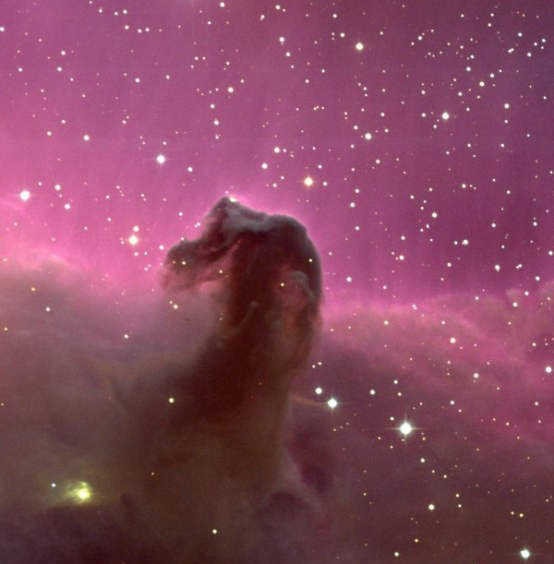
۱۵- کهکشان Sombrero
یک کهکشان مارپیچی در صورت فلکی سنبله است. شاخص بارز ان خط گرد و غبار و حلقه متقارن آن است.

۱۶- پروانه مینکوفسکی (Minkowski)
اولین تصویر این سحابی در سال ۱۹۹۰ توسط تلسکوپ هابل ارسال شد. شکل آن شبیه بالهای پروانه است.

۱۷- سحابی سه شاخه
سحابی درخشان و رنگارنگ سه شاخه مورد علاقه بسیاری از منجمان است. آنرا عقابی با بالهای باز که بر ترکه ای نشسته است تصور می کنند.
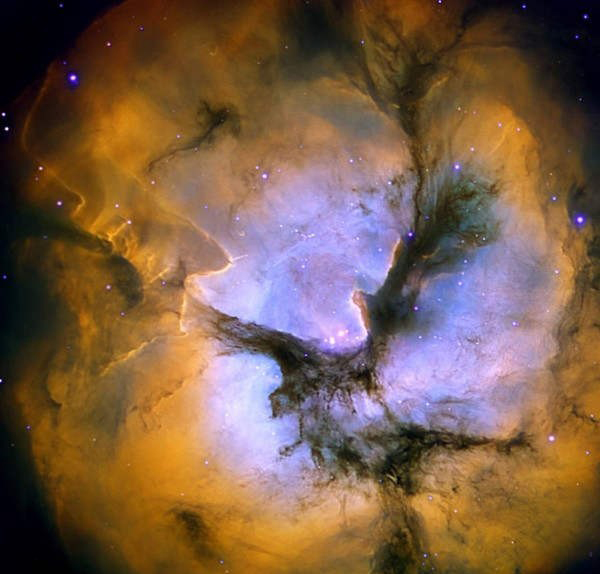
۱۸- Eta Carinae
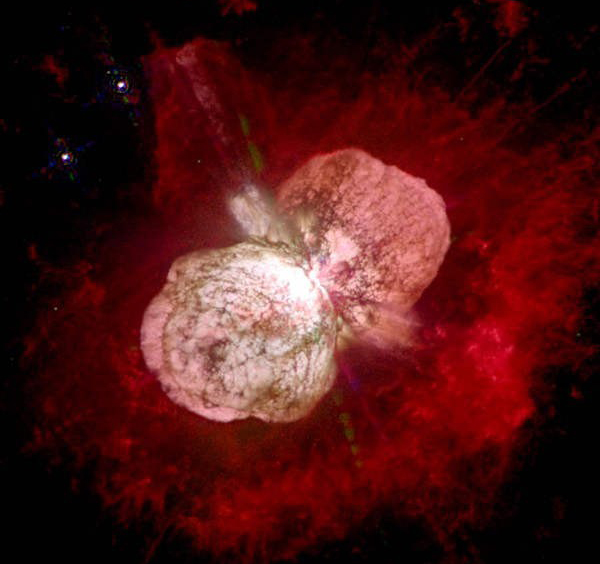
19- قلب درخشان
فاصله تقریبی آن تا زمین حدود ۷۵۰۰ سال نوری است. غبار سحابی آن از پلاسمای یونیزه شده توسط هیدروژن بوجود می آید.
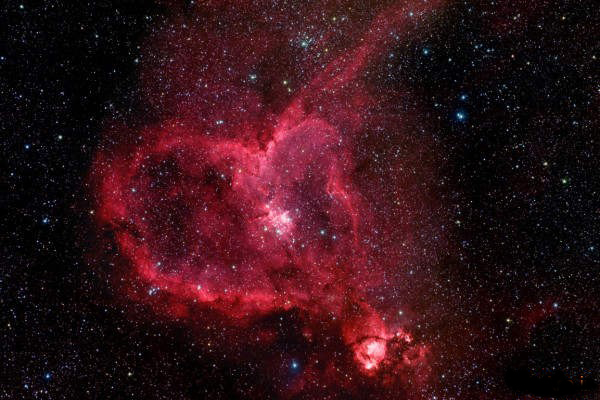
۲۰- سحابی چشم گربه
یکی از پیچیده ترین فرم های شناخته شده است. یازده حلقه یا پوسته از گاز به همراه یک هسته درخشان، چشم گربه ای را ایجاد کرده اند.
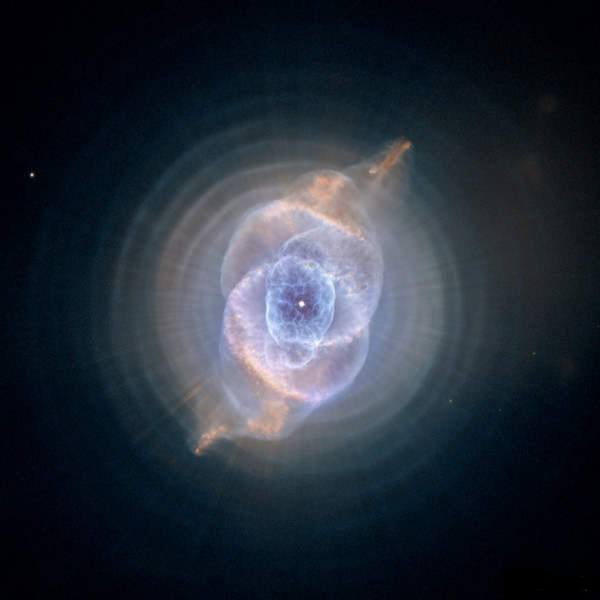
جملات ناب
هر ساختمان بزرگ ، زمانی فقط یک نقشه ساده بوده
مهم نیست که امروز در چه مرحله ای هستید
مهم آینده شماست و چیزی که به آن خواهید رسید . . .



